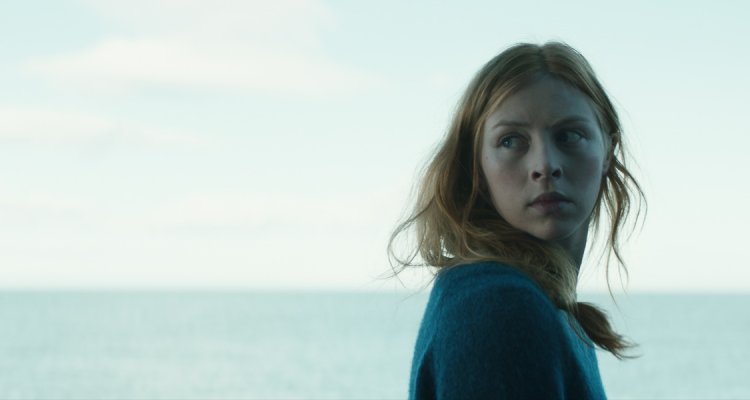If “Sea Fever” were only a horror film about the dangers of the deep, director Neasa Hardiman‘s feature debut would still be a solid entry into the genre. Its eerie soundscape instills a sense of dread before it even finishes rolling through wave after wave of production companies and national film organizations in its opening moments. That feeling only mounts as its story of isolation and terror in the Atlantic develops, bringing us on board a fishing boat harried by a mysterious undersea animal. But “Sea Fever” isn’t content to unsettle its audience for much of its running time—though it’s quite good at doing so. Instead, there’s more at play here, particularly an empathy for both its human characters and the natural world that sets this Irish film apart from your average creature feature.
READ MORE: 2019 Toronto International Film Festival: 25 Most Anticipated Movies
Siobhán (Hermione Corfield) is a marine biology student who feels more connected with the animals she studies than the people around her at her university in Ireland. As part of her program, she temporarily joins the crew of a small, scrappy fishing trawler to examine their catch, looking for anomalies and patterns in what their nets bring up. Led by a couple (Dougray Scott and Connie Nielsen), the boat’s team doesn’t exactly welcome the awkward scientist, put off by her red hair—lousy luck in sailors’ superstitions—and cold demeanor. However, when a strange sea creature attaches itself to the boat’s hull and begins attacking the crew, Siobhán may present their only hope for survival.
Written and directed by TV veteran Hardiman (“Happy Valley,” “Jessica Jones“), “Sea Fever” is a deft melding of genres, bringing together body horror, the monster movie, and ecology-driven drama in a single, well-crafted package. There’s a bit of “Jaws” here, as well as “Alien,” “Annihilation,” and “The Thing,” but it still somehow feels very much like its own beast rather than a mutant creation made of past films. It evokes terror, awakening the lizard brain for anyone unnerved by the thought of the vastness of the deep or having their body taken over by another creature, but it also activates deeper thinking about our place in nature’s systems, as well as the value of an individual life.
READ MORE: The 20 Best Horror Films of 2018
In some moments, particularly in its early scenes, Hardiman’s script is a little too on-the-nose, while its tertiary characters could use more development and aren’t always distinct. But it’s otherwise a stunning debut for the filmmaker that doesn’t feel like a first film. Where “Sea Fever” is particularly interesting is in its juxtapositions. Mythology and superstition dwell alongside science, and fear resides next to awe and reverence. The creature is beautiful as well as unsettling, mesmerizing both the crew and the audience as it threatens Siobhán and the other people on board. The cinematography from Ruairí O’Brien (“The Fall“) nicely captures both the confined spaces of the boat’s cabin as well as the vast open ocean, making the audience share in the crew’s distance from both safety and shore.
With some gut-roiling moments, “Sea Fever” will please genre fans who like their horror movies with more than just jump scares. But with its thoughtful approach amidst its terrors, there’s not so much gore as to turn away those who are more interested in its ecological angle and the broader questions it asks. The initial draw of “Sea Fever” might be as a monster movie, but this is a profoundly humane and humanist film whose ideas stays with you longer than the nightmares. [B+]
Click here for our complete coverage from this year’s Toronto International Film Festival.

